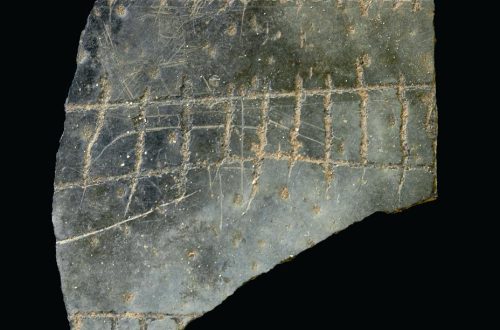The remnants of a royal palace built by the family of ancient Romes legendary tyrant king, Tarquinius Superbus (Tarquin the Proud), have been unearthed at Gabii, an ancient site 12 miles south of Rome, according to reports from archaeologists on Thursday. Excavators believe that the palace, which dates back to the 6th century BC, was the home of Tarquinius Superbuss son, the notorious prince Sextus Tarquinius.
Recovered fragments of the palaces terracotta roof display an image of the minotaur, a family emblem of the Tarquins, which has led archaeologists to suggest that it was home to many generations of Tarquins. While only a small portion of the site has been officially excavated, the finds to-date provide glimpses of a once opulent structure.
Superbus and his son were a historically influential, if unsavory pair. The Etruscan Tarquinius Superbus, who apparently murdered his predecessor to become Romes 7th king, ruled with such brutality that the Roman people vowed never to live under a king again. His reign ended with the revolt of 510 BC, which resulted in the creation of the Roman Republic. According to the Roman historian Livy (59 BC AD 17), it was the despots son, Sextus, who ultimately brought on the revolt, when he raped Lucretia, the honorable wife of his cousin Tarquinius Collatinus. When Lucretia stabbed herself, angry Gabians stormed Sextuss palace, tore the building to pieces, and murdered the prince.
While the excavations at Gabii will shed light on this tumultuous crossroads in Roman history, excavators underline the sites archaeological significance. “It’s an extraordinary find,” said Romes Archaeological Superintendent Angelo Bottini. “The way the site was demolished by furious locals in ancient times and later escaped local urban sprawl has allowed the palace to come to us virtually intact. While most buildings of such antiquity in Rome were torn down to make way for newer constructions, the 6th-century BC palace, which was found on the slopes of a dormant volcano, went untouched. The site has the highest standing walls roughly 6.5 feet of any Roman ruin from that period.
Look for the ancient city of Gabii to reveal more significant finds in the coming archaeological seasons. Nicola Terrenato, professor of classical archaeology at the University of Michigan who also leads an excavation at Gabii, said,”Gabii’s archaeological potential is enormous. It is one of the largest cities in Latium, and it is completely unencumbered by later buildings. When one thinks that what has been excavated yet is far less than 10 percent of the city, it is clear that many more surprises are in store.


